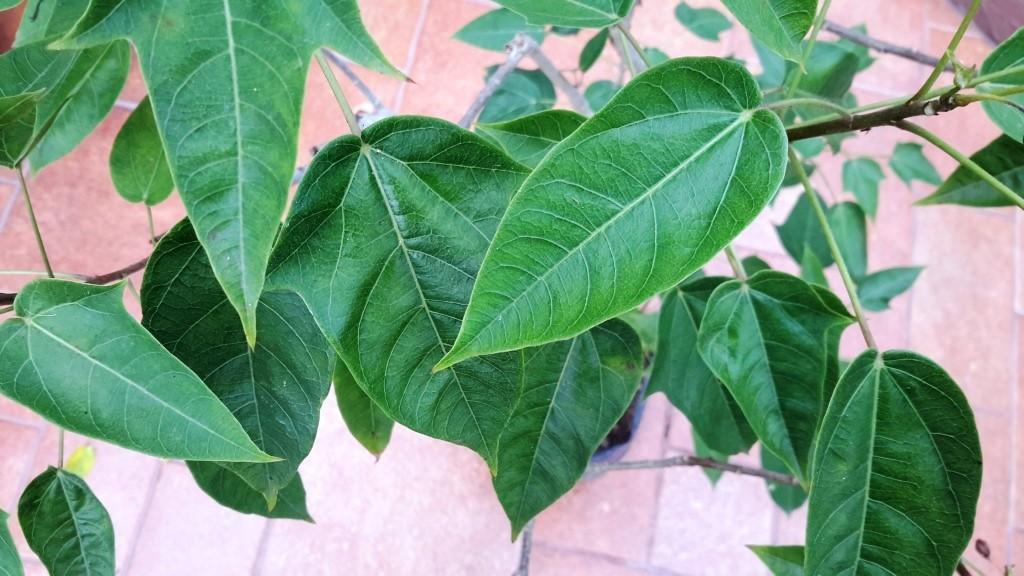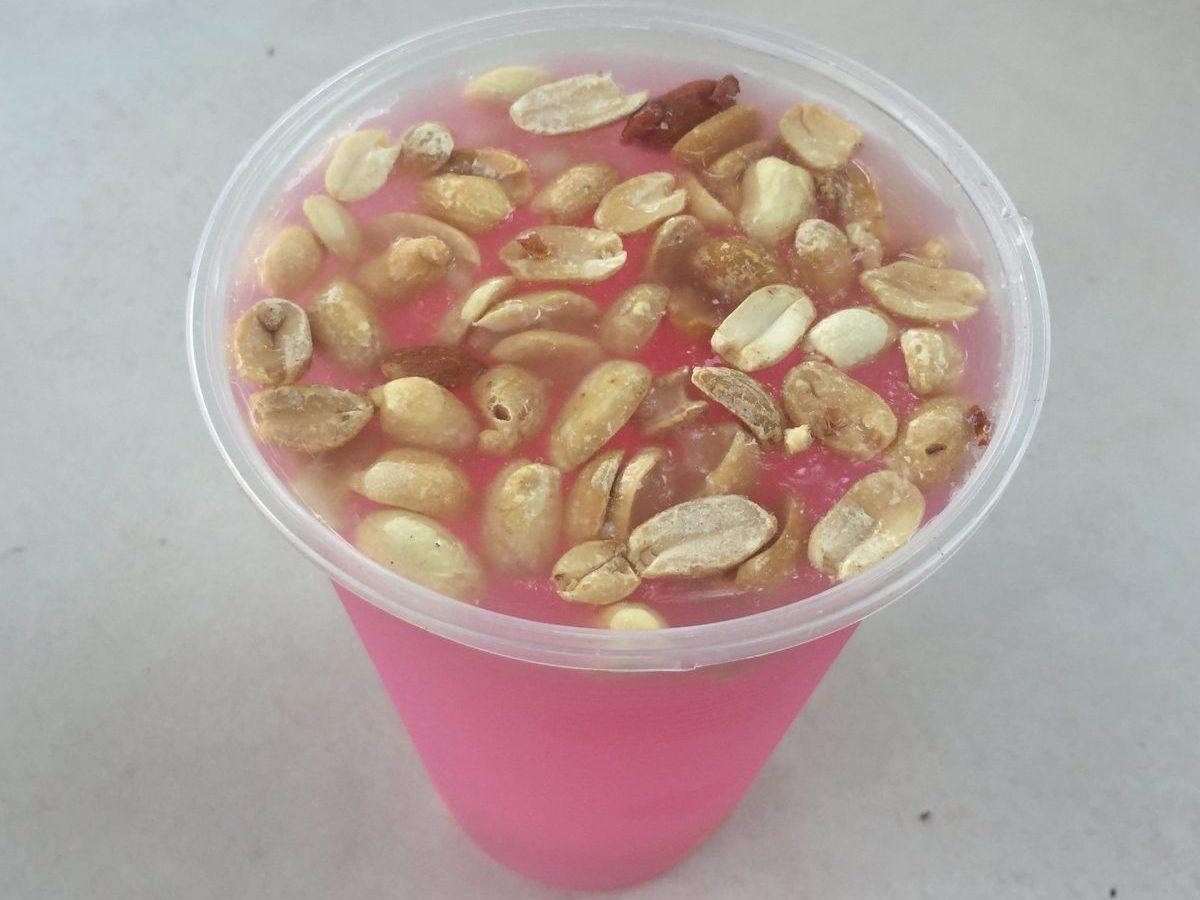
7 minute read
Physic Nut
by Tommy Clarkson
Physic Nut Jatropha integerrima –or, possibly, J. pastada or J. coccinea Family Euphorbiaceae
Advertisement
Also known as Nettlespurge or Rose-flowered Jatropha
Ever in search of new species of tropical or semi-tropical plants
that will complement the others in our gardens, I was recently
delighted to come upon this perennial - but was rather puzzled regarding its botanical specifics. (Actually, this is a writer’s classic way of saying that, in point of actuality, I had no idea whatsoever what it was!)
Thus, I was delighted when I narrowed its identification to the
family of Jatropha - with help from Dr. Mark Olson and Dr. Ar-
thur Whistler.
(Now, to a degree, that begs an interesting question. Technically speaking, can someone rather significantly junior in age - but vastly more educated, experienced and knowledgeable in this field then me - still be called such? Well, given the breadth and depth of his plant awareness - to say nothing of his generosity and willingness to share all manner of tropical botanical plant information with me, I must most absolutely say, a definite,
yes!)
Along with the name, he kindly informed me that, “You are in a Jatropha hotspot, with at least six wild species in the area, in-
cluding the super charismatic Jatropha chamelensis, which has
a big trunk with golden papery bark and leaves like huge,
green, dinner plates.”

They can develop interesting leaves that look like horns!
Beyond that, those who have copies of Volume I and II or our
book series - based on plants in our Ola Brisa Gardens - “The Civilized Jungle,” will recall that the Gout Plant (Jatropha podagrica) was discussed in the former and the Coral Plant
(Jatropha multifidi) in the latter.
Hence, it should logically follow that Jatropha coccinea should
be in Volume III. (Now to decide when to write about Jatropha curcas, J. gossypifolia, J. integerrima, J. ortegae and some of the others with which I am more personally familiar!)
The some 150 species in this genus range from smallish herbs,
through medium-sized shrubs to smaller, tree-sized plants.
Some are perennials while yet others are annuals. Tropical and
semi-tropical in nature, they range all around the world. Perhaps their greatest diversity may be found in Africa and the
Americas. They prefer sandy, non-water retaining soil and can
be propagated by either cuttings or seed.
Their primary commonality is the similarity of their flower struc-
tures. They like sun to partial shade and regular watering. They
can be all monoecious (meaning that they have both male and
female flowers on the same plant or dioecious (on different
plants). These blooms are found most attractive by butterflies.
Moreover, while all parts of the plant are poisonous, the seeds
from them is being studied as a potential fuel alternative! I kid
you not!
...Physic Nut

In maturity, they can grow into a small sized tree. The medium-sized leaves of this species - and for what reason I
have no idea - cause the word “elfin” to come to mind! They are a bit unique . . . and rather attractive, with their two “pointy -outy” (Don’t you love it when I use these highly technical bo-
tanical terms?) spiked sides on the upper part of the lamina
(blade, or the principle part which most of us folks think of as
the leaf proper) not far down from the stem!
These - all by themselves - keep the leaf from having the more
classical, oval shape. They are pretty, in a leaf sort of way, pure,
simple and basic green in colorization. The smallish flowers are
five-leaved, full and pinkish.

Its smallish flowers are five-leaved, full and pinkish.
Prone to more sun than shade, our new specimen is the subject
of an experiment. It is presently nestled in a hanging basket on
the southeastern side of our dining palapa. Its neighbors - on
that side - include a lush fern, an intriguing vine that I have yet
to identify, a Christmas Cactus, a carnivorous Pitcher Plant and
a white Geranium. (Yes, I readily admit the latter to not being
“tropical per se” but my Grandmother (Rose Unruh) loved them,
so it is there in her honor!)
So far, it has done rather well but we will have to study the ef-
fects of a full year of seasonal sun direction change. Now, though we’ve had our specimen not all that long, my suggestions as to properly growing and maintaining a Jatropha
coccinea would be in moderate to slightly filtered sunlight -
not protracted hours of hot sun - definitely planted in well-
draining soil, and watering once it begins to dry out (via proper
usage of a hydrometer) about three to four inches down into
the roots and applying a general floral fertilizer monthly.
For back issues of "Roots", gardening tips, tropical plant book reviews and videos of numerous, highly unique eco/adventure/nature tours, as well as memorable "Ultimate Experiences" such as Tropical Garden Brunches
Visit us at... www.olabrisagardens.com
Tuba - A Manzanillo Favourite
The hot and humid climate of the Pacific is not like anything else. You can walk through the streets with light clothing, and you will still have to hydrate to enjoy the trip. Fortunately, there is a Colima gastronomic drink that refreshes any overheated person: the tuba. It is the honey or sap extracted from the heart of palm trees. As a product of a cultural mixing, and with a lot of history, tuba conquers any overheated soul and then some when it is mixed with peanuts.
Like the entire Pacific coast, the Filipino influence on cuisine is very evident thanks to the Nao de China. With it came, among other things, the palms that give rise to this delight.
La Nao de China (the alternative name for the ship, Galeón de Manila) greatly influenced Colima’s gastronomic culture. At the time of the viceroyalty, this ship sailed from the Philippines and towards Acapulco stopping at Manzanillo, where the first products and people disembarked. This is how the palm or coconut tree began to be cultivated, from which the migrants produced a drink called coconut wine or lambalong .

Tuba
This fermented wine was related to the pulquero mead already known to the natives: the heart had to be scraped to extract a sweet and nutritious liquid. The coconut wine had such a high alcohol content that it was banned and the tradition of producing it was forgotten.
But part of the history survives as a sweet drink in the mornings and a little more acidic if it is extracted in the afternoons: what today we know as tuba . Today it is a symbol of Colimotaidentity. Even in the main garden of the city of Colima there is a monument dedicated to the tuberos that shows them with their traditional clothing and their vessel, a kind of giant gourd where the tuba is stored to keep fresh.
Don Leo

Leonardo Morán Moreno, alias “Don Leo”, has spent 77 years of his life producing tuba. He has been a boxer, cook and bartender, but climbing palm trees has always been a constant. While singing and reciting verses, he climbs some steps that he himself carved into the trunk of the palms; all this happens in the middle of the city, specifically in one of the main avenues of the city of Colima, the roundabout of El Charro .
Once in the palm vessel, he begins to scrape the stem and extracts the liquid with a hose that leads to a small jug. Somehow juggling all, with great skill, he comes down from the palm with the yet unprepared tuba. DonLeo extracts tuba twice a day; the first is a little sweeter and is served for breakfast with a special bread called birote. The second already has more acid notes, but is still just as good.
To be sold, it is tinted with beets and pieces of fresh fruit are added to balance the sweetness of the mead. To complete the equation, you need an element that adds a bit of salt and consistency to the tuba; that's where peanuts are added.
Something happens the moment you take a sip; the world truly becomes a cooler place.
See more about tuba in this video.
Source AnimalGourmet Photos and article by Paloma García Castillejos





